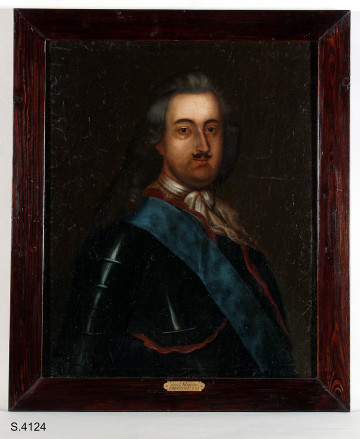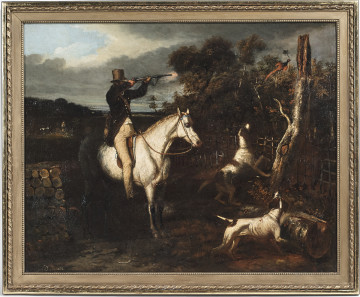
Jozef Klemens Czartoryski
18th century
Castle Museum in Łańcut
Part of the collection: Varia
A spirally twisted tooth of a narwhal (Monodon monoceros) was set in a stone foundation supported by three volutes on a wooden plinth. In the Middle Ages and the modern age, the Europeans believed that this tooth was actually the horn of a unicorn – an animal described by ancient writers, in bestiaries, or even in Septuaginta (a translation of the Old Testament into Greek). For example, according to Physiologus (a text written in the early Christian period), it was ‘a small animal, similar to a goatling, very dangerous. It is very strong and the hunter cannot approach it. It has one horn in the center of the head.’ Unicorns were often presented in sacred art as a symbol of Christ or in portraits, where they represented chastity and innocence. The unicorn’s horn (alicorn) was also believed to be a miraculous nostrum for all ailments. For the above reasons, “the unicorn’s horn” was intensely sought by collectors. Kings, dukes and other rulers in Europe and even popes kept this item in their collections. In an inventory of goods kept in the Warsaw treasury of King John III Sobieski, we can come across the following item: ‘the whole fish bone in a box, or the Unicorn’. This last description suggests that it was realised back in the 17th century that this horn belonged not to a white-haired animal submissive to virgins and resembling a horse or a goat, but to a creature living in seas. A factual description of the sea unicorn can be found in a work by the Danish naturalist Ole Worm (1588–1654). He explained that it was a ‘whale called a narwhal by Northern peoples’ (Museum Wormianum, Leyden 1655, p. 282). Even though until the end of the 17th century, or even in the 18th century, some people claimed that mythical unicorns existed or even that they had seen them with their own eyes, these beliefs gradually dwindled.
Author / creator
Dimensions
entire object: height: 170,0 cm, width: 21,0 cm
Technique
sculpture,stained,varnishing
Material
alabaster
Owner
Museum of King Jan III's Palace at Wilanów
Identification number
Location / status

18th century
Castle Museum in Łańcut

XIX century
Castle Museum in Łańcut

XIX century
Castle Museum in Łańcut
DISCOVER this TOPIC
National Museum in Szczecin
DISCOVER this PATH
Educational path